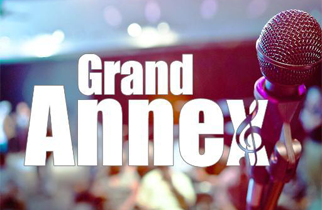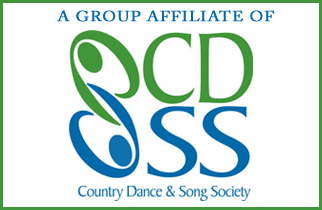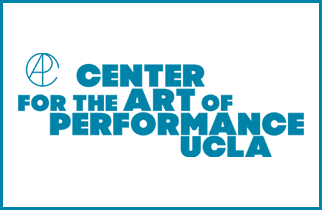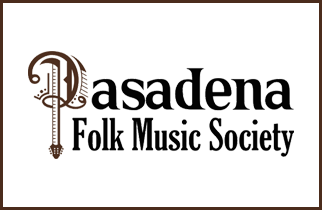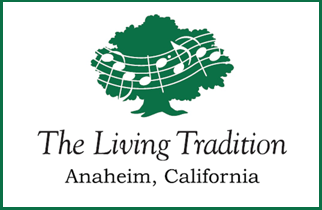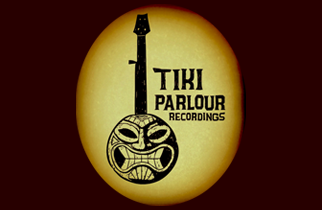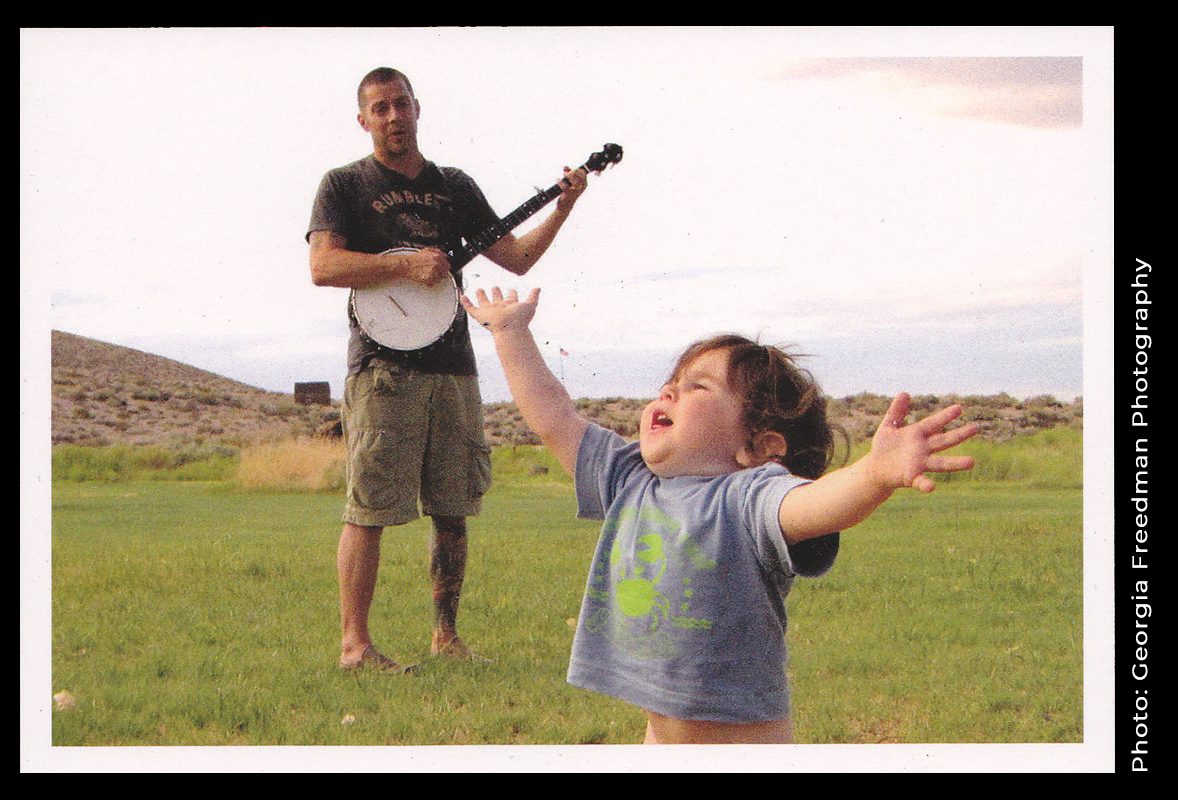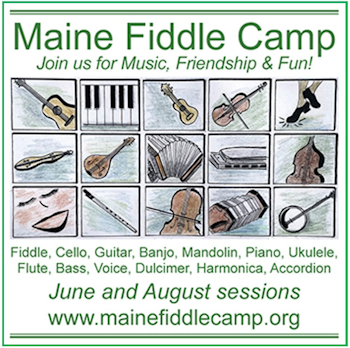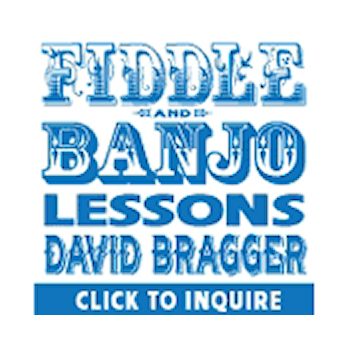DRUMMING DIFFERENT CULTURES
DRUMMING DIFFERENT CULTURES INTO YOUNG HEARTS AND MINDS
We are in a season of beginnings. From kindergarten through college, September has always signaled a new start. The pattern continues if you have kids, or if you work in the field of education. That’s a tough gig these days and especially tough for arts educators. With teacher layoffs and program cutbacks, some music educators – like an acquaintance of mine – find themselves serving not just multiple classes but several schools in their district. If music education is spread so thin, what can we hope for it to accomplish? Can we expect innovative programs that introduce the music we celebrate in FolkWorks: the sounds and rhythms of other cultures and the roots music of our own?
Some of the programs doing just that originate outside the traditional school system. It was at one of the Music Center’s World City Saturday performances that I first encountered Dr. Craig Woodson, originator of a curriculum called Roots of Rhythm, designed for elementary and middle school children. I can still feel the excitement of that March morning on the garden level of Disney Hall.
The area around the outdoor Keck Amphitheatre is buzzing with activity between performances. Art booths beckon to the families who have come to see a Czech antique marionette company and Hungarian folk music ensemble. Tots walk around sporting masks, puppets, and odd-looking creations that remind me of the Pixar logo. These last items are coming from a booth where a clean-cut middle-aged gentleman is manipulating materials with the speed of a magician. At the same time, he’s calling out like a carnival barker: “Come and get a musical instrument! Decorate your own instrument!” punctuated by asides to eager children clustered at his table: “You want red? Here’s a red marker…That looks great! “Yours is nearly ready!”
The instrument maker puts together a 10-inch cardboard tube already decorated with brown and yellow squiggles, pierces it through the side of a wide Styrofoam cup at the top and a clear plastic base on the bottom (what Starbucks would use to cover a frappuccino). In seconds, he has secured both with tape, attaches a piece of nylon string, and wedges in a piece of wood. The wood piece has nick in the center to serve as a bridge for the secured string. “There!” he proclaims, handing it to an open-mouthed pre-schooler. “It’s yours!”
“Now, how did you play that again?” the child’s mother ventures. The instrument maker holds the tube to his lips with a trumpeter’s embouchure and blares out a note. Then he plucks the string. The child grins and begins plucking the home-made version of a traditional Hungarian wind/string instrument that the ensemble demonstrated in performance.
Drawn like a magnet, I’m thinking, “Who is this guy?”
A short conversation with Dr. Craig Woodson and a glance at his workshop flyer spurs me to sign up for his Roots of Rhythm weekend training for teachers. I don’t teach music. But I want to discover the source of his magic.
On Friday afternoon June 4, I am among the 10 workshop participants arriving at the headquarters of renowned drum manufacturer and dealer Remo, Inc. in North Hollywood. They are mainly elementary and middle school teachers with varied amounts of experience with drums and the curriculum. In the multi-purpose room, Woodson greets each of us with a copy of the spiral-bound Roots of Rhythm teacher’s guide and invites us to sit in front of the waist-high African drum of our choice. After a few minutes tending to registration, Woodson smiles at the group sitting in a semi-circle before him.
“Who wants to give us the drum call?”
We sit in silence, contemplating our drums.
“It means who wants to start? Anybody?” He coaxes us in a sing-song voice. “Who wants to start the rhythm?”
Suddenly a middle-aged woman slaps out a rhythmic pattern and we all follow her lead. Craig embellishes on the pattern on his djembe. Soon the rest of us are adding our own embellishments. Now Craig is layering whoops and whistles over our drumming. After dousing us in this shower of rhythm for several minutes, Craig signals us to come to a stop. Somehow we all understand and stop simultaneously.
Now everyone is relaxed and receptive. One by one, we share what we do in music and why we have come. Then Craig Woodson introduces himself and the Roots of Rhythm curriculum.
Describing himself as “65 (he looks much younger!) going on 23,” Los Angeles-born Woodson began playing the drum in the fourth grade. By age 13, he was making his own drums, encouraged by his mother, a pianist and singer, and his father, an engineer. He became a virtuoso drummer, playing with orchestras, getting ample studio work, and drumming jobs in films – he has two Elvis movies to his credit. The drumming gigs continued even as he studied performance, music education and ethnomusicology at UCLA. He did his doctoral dissertation on talking drum traditions in Africa.
In 2004 the House of Blues Foundation approached Woodson with the project of creating a curriculum that would introduce American elementary and middle school children to percussion traditions of the world. The Percussion Marketing Council, seeing an ultimate benefit in raising children’s interest in playing instruments-and later purchasing better instruments– helped underwrite the cost of training teachers. As a focus for the lessons, Woodson selected 10 instruments in four continents –two from Africa, two from Asia, two from Europe, two from the Americas, and two from the Middle East.
The introductory section of Roots of Rhythm explains how to construct instruments out of low-cost, easily obtained materials. I’m thinking, “It doesn’t have to be in school. You could use it with your kids!” An accompanying CD contains performances and play-along exercises.
Roots of Rhythm lessons encourage kids to explore musical traditions different from their own and give them a sense of ownership and pride as they make and play these percussion instruments. Each lesson gives the geographical features, historical highlights, and cultural background of the area where the instrument is played.
A grant from the International Association of Music Education allowed Woodson to follow up the first 10 lessons with related lessons. “What we call the ‘extensions’,” he explains, “show what happened when those 10 drums went out into the world. They also show newer connections. So, one of the new instruments was the turntable. We had a hip-hop committee (to research and select music for that lesson).”
Within a half hour of the first drum call, we are creating rudimentary percussion instruments using large tin cans. Craig nudges us along. “There are many ways to do this – mess and guess -you can do it with smaller cans, you can do it with bigger can. Make sure all the little nubs on the cans are gone. Hammer them down. Be sure they are not going to cause a little bit of blood on someone’s finger.” He picks up a hoop about a foot or less in diameter. These are hoops, embroidery hoops. Every drum has to have a collar. This is one sided drum – actually Nigerian.”
As we struggle with strapping tape and hammers, he injects anecdotes from his colorful curriculum vitae. In 1970, Woodson went to Morocco to study the bandir, a Middle Eastern drum, and produced a video of this first field experience. On his way home through London, he came across a drum that a Nigerian musician had made out of fiberglass. “I thought, if a Nigerian guy is making drums out of fiberglass, I can, too,” he recalled. “So I went back home and started making fiberglass African talking drums.”
By 1976, Woodson had started his own company, EthnoMusic, Inc., specializing in making African musical instruments for schools and presentations. That led to the invitation in 1979 to direct a project in Ghana whose goal was to re-stimulate traditional music making and cultural awareness. The vision of by Professor Kwabena Nkteia of the Center for Cultural Studies, University of Science and Technology, based in Kumasi, Ghana was to produce African musical instruments for 5,000 elementary schools and revive traditional music. Between 1979 and 1984, Woodson helped realize that vision. “What I was asked to do was to go to all the remote places and find old guys that were carrying the traditions – flutes, drums, string instruments – who were left after the colonial time and try to re-stimulate cultural awareness.
One of Woodson’s fondest memories is of an elderly man who played the seperwa, a harp-lute type instrument, to his ancestors every morning. The people in the little town northeast of Kumasi did not consider him special, but once Woodson had invited him to demonstrate and teach instrument making and traditional songs to school children, they recognized him as a master musician. He became a local celebrity. But the greatest excitement was seeing the kids making instruments.
He returned to the United States, and worked on various projects introducing musical instruments to children in different parts of the country. It evolved from doing workshops in schools to involving major orchestras in the teaching process. “I had worked with groups of 100-200-300 people,” recalled Craig. “Now it became like thousands at a time. In 1993, I did a concert series with the National Symphony Orchestra – 25,000 kids. 2,500 came in at a time to the Kennedy Center, made instruments with recycled materials, and played along with five symphonic compositions. And I started doing educational concerts with the Kronos Quartet. We toured all over New York, Germany, Europe. Our most recent was at Carnegie Hall with 600 kids. Then I started working with NASA in 1999. We made a video called Windows on Mars — about musical instruments you could make on a space ship. It went out to every elementary school in the country. Then I got a grant from the National Endowment for the Arts to do an assembly so it’s one of my assemblies now called To Mars with Music in 2030.”
How does he get children to sign on for a musical construction project? “Kids want to know three things,” says Craig. “Who are you? Is this going to be fun? Are you going to be my friend? And you have to answer them in about five seconds. You need to get a bit nutty.”
Suddenly he shouts, “Raise your hand if you’re here! Raise your hand if you’re not here. Raise your hand if you don’t want to raise your hand! Right off the bat, they’re thinking, ‘Who is this guy?’ But I’m telling you, these things work.”
For a change of pace, Woodson served as education director for the Rock and Roll Hall of Fame in Cleveland, Ohio between 2001 and 2003. “I did workshops for hundreds of teachers. We had 25,000 kids a year coming there. I had a program called Rock-it Science that made scientific connections with rock and roll.”
Since then, with picturesque Chagrin Falls, Ohio as his home base, Woodson has been presenting music assemblies and instrument making workshops at schools in Cleveland, Columbus and nearby areas on a regular basis He considers one of his after-school programs a kind of laboratory and pours his intensity into connecting with the kids. “I’ve got Asperger’s kids, pre-schoolers, all the way up to 5th grade, about 60 kids at a time. And I try to make a different instrument every time with them. They seem to work. The bottom line is you get an instrument (to make) and you take out the part that they can’t do (and do that part for them in advance) and then put it in their lap and let them (finish) it. Decoration is huge, it’s huge. Just imagine leaving a drum blank. And you say, “Now here are a bunch of markers. Make your own drum.” What’s the difference? The difference is all of a sudden you’ve invested something from your soul, your heart – even though it’s all finished (except for decoration). Now imagine making the drum and then decorating it. Whether it’s a feather or sparkles, I’ve got some other things here which are just so simple, so simple and they just add a pizzazz.”
Later we are assembling and tuning a wooden xylophone based on the Thai ranat ek. We have four pieces of wood, roughly 3 inches by six inches that we are taping together. “All right, so now we have them all in order,” says Craig. He holds up his linked pieces of wood and hits them with a stick, getting a snappy rhythm using their different tones “I can just play with these for a while. That’s what kids do. That’s how it all started. People beating sticks and so on. Joseph Kobom (of Ghana) told me that the way he got his xylophone was he went out into the forest, heard the birds…” Craig whistles a robust multi-toned four-note rhythmic pattern several times. “He came back with those four notes, got four pieces of wood and built the xylophone based on the song of the birds. Isn’t that cool?”
We are all smiles. “Cool story,” someone replies.
By the end of the workshop, I know a few more intriguing facts about Craig Woodson. He makes over 300 different instruments of all types, not just percussion. He has reached over a million kids with his programs. A consultant to drum dealer Remo, Inc., he has designed the handle-leg connector drum set called Sound Shapes, which Remo markets. The components, available in a different sizes and shapes, can be configured in a variety of ways. He has developed curriculum connections for using Sound Shapes to teach math, science, and multicultural music. Most recently, working in collaboration with music therapist Christine Stevens of Save the Children, he has led instrument making workshops and drum circles with refugees from South Sudan and survivors of Saddam Hussein’s genocide campaign in Kurdestan. That humanitarian work is a growing, ongoing story.
By Sunday I’m brimming with information and inspiration that I will be pondering for weeks, maybe months. I also realize that I’m only just beginning to fathom the potential impact of Roots of Rhythm, the magic of Craig Woodson, and the answer to the question, “Who is this guy?”
Audrey Coleman-Macheret is a writer, educator, and passionate explorer of traditional and world music.


